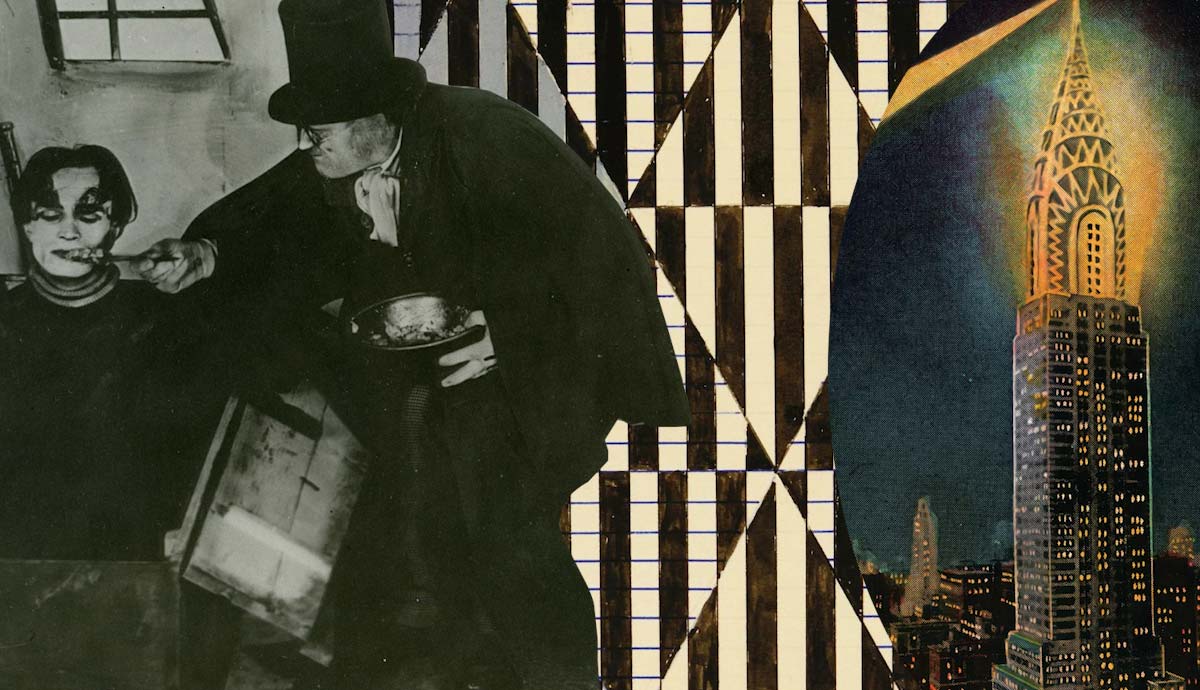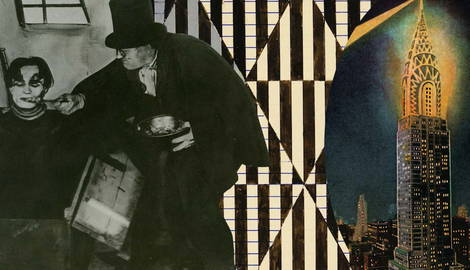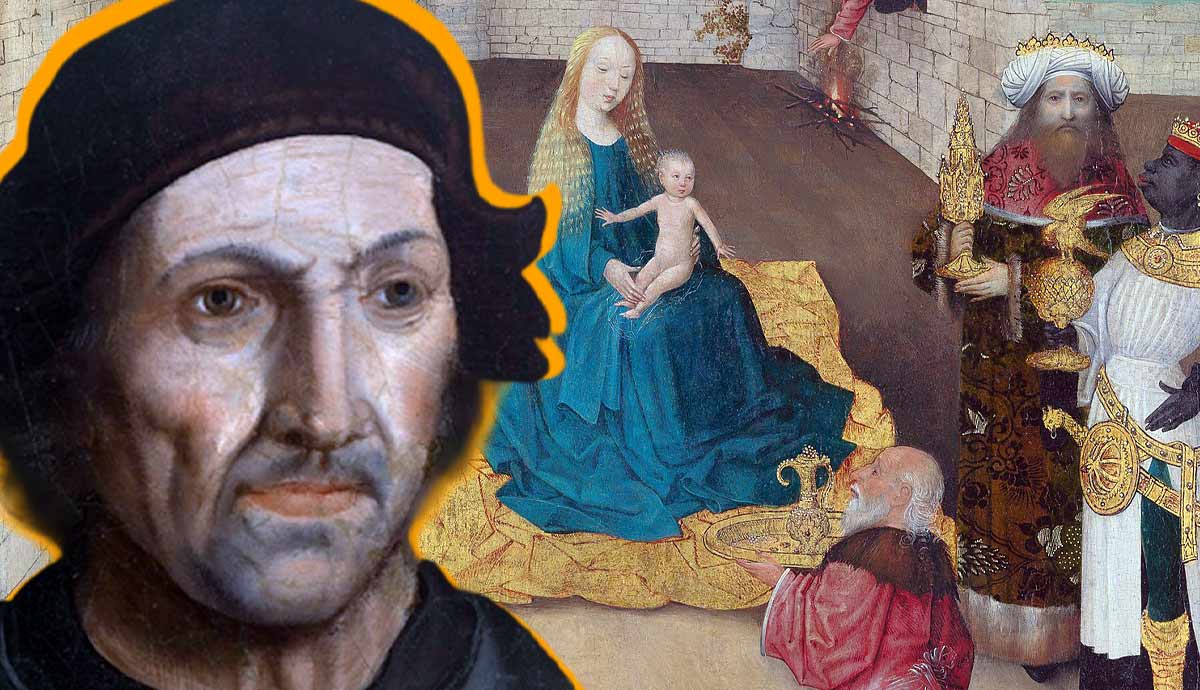
The Roaring Twenties was a versatile and remarkable period that came to life when interwar anxiety blended with the excitement about the new world. While some aimed to invent the aesthetic language of the future, others searched for their identities in the present. The style of Art Deco ambitiously presented itself as the quintessential popular style of its age. At the same time, intellectuals constructed new philosophies around jazz, politics, and explorations of the psyche. Read on to learn more about six cultural trends that defined the Roaring Twenties.
1. Art Deco: The Quintessential Aesthetic of the Roaring Twenties

The sleek modernity of Art Deco came as a logical and functional development from the art movements of Futurism and Cubism. The strict geometry of Cubism and the Futurist admiration of high-end technology blended with many aesthetic influences, including ancient Egyptian and Japanese art and architecture. The dynamic angular realism of Art Deco, with its abundant decoration and pleasing symmetry, was the ultimate alternative to the highly intellectualized forms of Modernist art that paid significantly less attention to visual components. The paintings of Tamara de Lempicka, jewels by Van Cleef and Arpels, and the majestic chrome presence of the Chrysler building were impressive just as they were.

Art Deco was an all-encompassing style covering all possible human activity domains. In a way, it was a brand selling a modern and affluent lifestyle. Contrary to Constructivist architecture or the theoretical musings of Bauhaus academics, Art Deco never needed to explain itself or justify its existence. It was purely hedonistic, escapist, and luxurious. The style allowed its audience to escape the grip of interwar anxiety.
2. Expressionist Art & Film

Expressionist art was one of the most controversial trends of the Roaring Twenties era. Raw, dramatic, and primitive, it expressed the anxieties and fears of the modern time. Artists like Ernst Ludwig Kirchner, Oskar Kokoschka, and Franz Marc sacrificed realistic imagery in favor of emotional intensity. They used vivid colors, showing skin using neon green and sky blue with deep red. Their brushstrokes were messy, their angles sharp, and their figures resembled African ritual masks. Non-western art, particularly that of Africa, influenced the Expressionists with its relative simplicity and direct dramatism unrelated to the Western canons of painting. Some art historians insist that although Expressionist painting was indeed a revolutionary movement, it was not entirely new in its essence. The great Renaissance painter El Greco had already employed the same concepts of distorting lines and colors for emotional value centuries ago.

German Expressionist film was a significant cultural domain that defined the decade and left a profound mark on art history. During World War I, German authorities banned the distribution of foreign films, which led to the development of the local cinema industry, although on minimal budgets. With Germany losing the war, the overwhelming feelings of anxiety and grief gave rise to a new form of film that centered around characters’ inner emotions rather than objective reality.
3. Harlem Renaissance and the Jazz Age

The 1920s were also the time of the great rise of African American culture, commonly known as the Harlem Renaissance. Propelled by the developing economic prosperity of Black neighborhoods and the emergence of the local middle class comprised both of African Americans and immigrants. Local creatives aimed to create a culture free from ethnic stereotypes, one that was relevant to their neighbors. Harlem poets, writers, artists, and sculptors centered their work around the Black American identity, the struggles of racialized violence, segregation, and the aftermath of slavery. Augusta Savage was one of the most famous sculptors of the Harlem Renaissance, whose life and art defined the cultural era.

Another cultural landmark that originated in the African American community was jazz music. Jazz became almost synonymous with 1920s culture. With its origins in the American South, jazz mutated from a local type of folklore into a world-known phenomenon. This emotional, complex, and interpretative genre of music became the main soundtrack of the decade.
4. Surrealism

The art movement of Surrealism had its roots in the turn-of-the-century explorations of spirituality and the newly developed discipline of psychiatry. Decades before, spiritualists used automatic writing and drawing while trying to reach the world of ghosts and spirits. During the 1920s, Surrealist artists and writers reinterpreted these acts as expressions of subconsciousness. Thus, the focus of exploration turned inwards, prioritizing the individual mind over the shared space of the physical world. Surrealism explored the dark corners of one’s mind, the deeply repressed desires, fears, and anxieties. Partially, it developed from the hysterical absurdity of Dadaism.

Although most commonly associated with painting and literature, Surrealism was an all-encompassing movement that included film, sculpture, and fashion. The famous fashion designer Elsa Schiaparelli was an important participant in the movement and the original creator who translated the principles of Surrealism into the language of fabrics and decorations. Despite the institutional barriers, women artists actively participated in Surrealism and, in many ways, defined it. Surrealist photographs from masters like Dora Maar and Kati Horna became the foundation of contemporary fashion photography.
5. Bauhaus

Although often incorrectly labeled as an art movement, Bauhaus was an ambitious educational project—a progressive art school made with the ambition of bringing together individual artistic vision and industrial production. Established by the famous architect Walter Gropius in 1919, it had a short yet remarkable lifespan of just 24 years before it was closed by Nazi authorities as the center of Jewish left-wing intellectualism. The Bauhaus students were taught to develop form from the object’s expected function. The building itself reflected the original and modern approach to teaching. Lectures were given in an open space that could be separated or enlarged using moving wall panels. Perhaps the main treasure of the Bauhaus school was its academic staff, comprised of the most progressive artists of their age, like Wassily Kandinsky and Paul Klee.

Despite its austere minimalism and functional approach, the Bauhaus ideology was not too far removed from metaphysical matters. On the contrary, many of the professors had occult and spiritualist affiliations. Kandinsky was involved with the quasi-scientific movement of anthroposophy, which aimed to develop a conscious state of existence and interaction with natural forces. Kandinsky was also a prominent art theoretician who explored the spiritual components of visual art. Another Bauhaus legend, Swiss designer Johannes Itten, was a member of a highly controversial neo-Zoroastrian cult Mazdaznan.
6. Constructivism: The Communist Roaring Twenties

Constructivist art and design aimed at rejecting the traditional markers and components of high art that inevitably were rooted in elitism and class differentiation. To make art accessible and understandable to everyone, constructivism relied on simple geometrical forms and primary colors. All elements had to be functional, but they also needed to demonstrate the transformative power of the new, equal society. The new aesthetic language relied on the possibilities of industrial production rather than craftsmanship, with the idea of immediate and wide availability of goods. Despite the aim for functionality, Constructivist architecture was not devoid of ambitious and confusing gestures—like the famous Tatlin’s Tower, the absurd utopian structure of rotating office spaces.

Among the most remarkable applications of constructivist aesthetic ideology was the early Soviet textile design. Before the revolution, the textile industry in the Russian Empire flourished, offering a wide array of fabrics. As the wealthy manufacturers were forced to flee Russia, production halted and needed a new impulse for development. Women artists like Lyubov Popova and Varvara Stepanova took the task of inventing new and modern textile prints that would fit the aesthetic and functional needs of Soviet consumers. Geometric patterns and optical illusions became the basis for Stepanova’s textile design.










